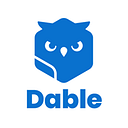Optimizing Native Creatives for Maximum Impact
Native ad is paid content that seamlessly blends visual presentation with publisher websites. The nascent form of online ads is propelled by AI and machine learning technology to analyze individual users’ preferences and browsing behavior then offer engaging ad content that is non-intrusive to website browsing.
Native ads enable consumers to naturally encounter advertisements, click on them, then proceed to the landing pages to receive more information of promoted products or services. However, the quality of the ad content, including ad messages and creatives, plays a crucial role to affect campaign performance. It is very important to adhere to Dable’s content policy. Ads that violate the policy are not allowed to run.
👉Visit Dable’s Advertising Support Page to learn more on Content Review Guideline.
We have also analyzed data in Dable’s marketing dashboard and summarized key points to consider when producing ad creatives.
Tips of Creating Ad Images that Generate Higher Performance
- Leverage Brightness for Visibility
More color and greater brightness in images can significantly enhance click-through rates. Research by Dable indicates that images with bright and vibrant colors receive a 2% higher click-through rate. From the above sample images we can easily find that a darker, dull-toned image may easily go unnoticed within the context of a publisher’s website, while a brighter one is more likely to captivate the audience.
2. Utilize Close-Up Images
Product close-up images are found to yield a 12% higher click-through rate, according to Dable’s data. Close-up images are more likely to capture the audience’s attention and can effectively convey product details, encouraging viewers to engage with the product.
3. Avoid Images that Caused Negative Perceptions
Images that evoke negative feelings or perceptions can significantly impact campaign performance, resulting in a CTR drop of up to 59%. Let’s take a look at the images above as an example. The image on the left addresses the problem in a straightforward manner that the product can solve; whereas the image on the right shows unpleasant visuals of the body. Keep your imagery positive and appealing to your target audience to maintain the effectiveness of your ad campaigns.
4. Relevance Is Key
Ensure that your ad image is highly relevant to the product or service you’re promoting. Irrelevant images can lead to confusion and, ultimately, a decline in performance. Your image should seamlessly complement your marketing message, clarifying how your product or service can fulfill consumer needs.
5. Avoid Adding Text or Logos
In contrast to social media advertising, adding text or logos to images in native advertising is counterproductive. When users encounter images with text in a native advertising space, they are more likely to perceive it as an advertisement and may skip over it. Native advertising thrives on the principle of seamlessly integrating with the layout and browsing experience, promoting higher interaction and user retention rates.
Tips for Creating Eye-Catching Ad Titles
- Fundamental elements of effective communication
- Define Target Audience Groups
- Stimulate Demand
- Highlight Product Features
- Deliver Useful Messages
A good ad title should be tailored to resonate with your target audience groups, then address a pain point that your product or service can satisfy. Also, highlight key features that set your offering apart, and provide valuable information that encourages engagement.
2. Conciseness is Crucial
Keep your ad title concise and to the point. The first 10 words are key to capturing the audience’s attention and encouraging them to learn more. Lengthy or complicated titles may deter potential customers.
3. Choosing the Right Title Direction
Opt for title strategies that incorporate questions, data, scenario comparison, and relate to hot news. These approaches can help you capture your audience’s attention and create an immediate connection.
4. A/B Testing for Optimization
To ensure the highest level of performance, consider A/B testing. Prepare at least three sets of materials, each containing different images and titles to test their effectiveness. Maintain the testing period for at least 7 days to accumulate sufficient data. Then, refer to the data to suspend materials with poor performance if needed and focus on those that yield the best outcomes.
★Bonus tips: Dable AI Ad Title Generator analyzes Dable’s internal database to create appealing ad titles by utilizing generative AI to collect elements of titles with high click-through-rate.
Native Ads Creatives: Putting It All Together
We have analyzed Dable’s data and highlighted key points for generating successful native ad creatives that can drive performance effectively. By following these tips and best practices, you can unlock the full potential of your native advertising campaigns and enhance the overall performance of your marketing efforts. Remember that native advertising is all about delivering value to your audience in a non-disruptive manner, and your creatives are the bridge that makes this possible.
For more information, please contact us via ad@dable.io

